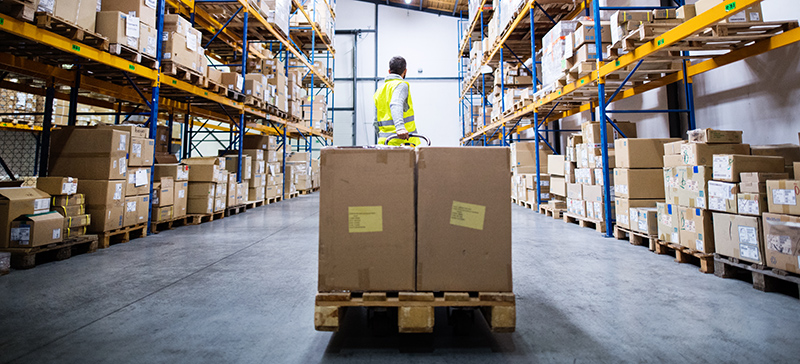Defining and prioritizing the future capabilities of supply chain, carrying out the activities of the 3rd stage of methodologies for updating supply chain strategy, specifically the SWOT analysis and internal audit of supply chain.
The continuous challenges of market require today new operational performances from supply chain
In the update of supply chain strategy, all companies should choose, as an initial point of reference, a SWOT analysis for evaluating current performance and documenting new operational requirements, and then move on to building operating model to support long-term strategic objectives.
SWOT analysis will provide a thorough assessment of the supply chain’s internal capabilities, opportunities, strengths, critical and vulnerable points of entire value chain.
Based on SWOT assessments we will then identify gaps between an organization’s current operational performance and future customer service requirements.

The future requirements identified as common to several companies in order to overcome the operational challenges of the next period, are:
Reduction of order delivery time
Among the top priorities of the supply chain in the next period is the reduction of customer order cycles, respectively the time period between the receipt of the order by the supplier and the reception of the products ordered by the customer.
Today all companies are betting on the short delivery time
Delivery time has become a differentiator of competitive advantages and must be correctly allocated to customer segments/groups together with other competitive values: delivery efficiency (lowest cost), flexibility of delivery options (multichannel or omnichannel deliveries), agility (mass customization- customization of modular products), special services with added value (formation of kits, installation of new product, takeover/recycling of old product, extension of warranty period, etc.).
Can’t you differentiate by price? Differentiate yourself through value-added services for sale or after-sale.
Digitization and automation of customer service, order management, warehouse and transport management processes can lead to faster order cycles, fewer errors in manual interventions and an increase in the quality of customer services.
Analyze the customer service level to determine how many orders you lose (low collection yield) and if you fall within the industry-wide delivery time. For example, delivery in 2 hours might not be acceptable if the industry started performing in 30-minute delivery. On the other hand, express deliveries with a short delivery time require the existence of a distribution network with geographical coverage to achieve these objectives. If you cannot achieve these delivery times, apply other differentiators, such as the diversity of products and brands or the outsourcing of e-commerce services to e-fulfillment companies.
Expanding collaborative processes by creating partnerships with marketplace platforms, 3PL transport, storage and e-Fulfillment platforms, suppliers of alternative products would allow adapting to market dynamics and reducing delivery time to customers at industry level.

Analyze the Lines or Orders Picked & Packed per Hour in the warehouse to decide how you will carry out the order fulfillment process, internally or externally, or what internal investments are needed to increase picking productivity.
In the case of investments in automatic equipment, their integration should not require modifying the WMS software or installing a new WMS. The automatic products handling equipment in the warehouse will be controlled by a WCS software, which will ensure the interface between the WMS and the control systems of the automatic equipment in the warehouse (conveyors, sorting units, picking/packing systems, AS/RS carousel systems, etc).
Also, with a WMS system you can monitor all phases of the order execution process (movement of operators in the warehouse, picking of products, sorting and consolidation of products in orders, preparation of orders for delivery) to eliminate non-productive times (travel times) and increase the productivity of order fulfillment process.
Diversification of sales channels
Multi-channel vs. omni-channel retail
In multi-channel retail sales, customers can buy, but separately, either in a physical store or online, without the interaction of sales channels in the same shopping session.
For example, customers who will buy on the online channel will not be allowed to physically return the product to the store, i.e. on the offline channel, because the multi-channel concept does not allow the interaction of several channels within a shopping session.
The new challenge of supply chains in the next period is to enable omnichannel delivery capabilities – get closer to customer demands. The evolution is not online vs offline but omnichannel and Every Day Low Prices. If you don’t adapt, you won’t be in the future market.
Omnichannel allows retailers to connect several sales channels within the same shopping session, improving the customer’s shopping experience. Retailers are obliged to respond to the increased and evolving demands of customers by opening the interaction between sales channels that offer contactless services. Omnichannel offers multiple ways to receive and return products:
The buyer’s opportunity to choose selectively from a menu of options and change the purchase decision in the same shopping session can represent a key differentiating factor, a competitive advantage.
Observation: Exclusive offline retailer must reinvent itself and take over omnichannel services.
The desire for online visibility of companies that operated only offline was forced by the restrictions during the pandemic. The new omnichannel delivery requirements of retailers, previously mentioned, transfer part of the online order fulfillment functions to physical stores.
Physical stores become micro-deposits that will also perform micro-fulfillment operations

The store’s commercial space will be specially designed to quickly collect online orders from customers near the store, with various delivery options: at home, with store pick-up or from Drive points, accessible by car. Organization of stores as Micro Fulfillment Center it allowed the use of the physical store for a better fulfillment, an improvement of the last mile services and a reduction of the delivery time by choosing the stores close to the customers when preparing the orders.
In the future, the development of partnerships with last mile service providers, lockers, couriers, etc. is essential for the implementation of omnichannel services. The suppliers of easybox lockers offer very important services for online deliveries, close to home or on the way to work.
Observation: Sales are very good online if you also have a physical offline presence.
You can meet the product online, but you want to check it, in many cases, offline. Create a complete online and offline shopping experience to remove the reluctance of customers to buy products, without being seen physically, with their eyes.
To increase the number of online orders, open offline showrooms in cities. The customer will order online after the visit to the showroom and the physical knowledge of the products, thus obtaining the confidence that he will not order from obscure or unsafe online sites. That’s why, when you can’t afford offline physical stores, it’s enough to have your own showrooms or pick-up locations to have an omnichannel presence in all possible delivery channels.
The hybrid sale of products using online and offline channels requires the implementation in the future supply chain strategy of some integrated support solutions for cross-channel processes, respectively:
Correct implementation of return processes allows efficient management and identification of opportunities to reduce returns, thus:
Improve product availability
Considering the fluctuations in demand and supply from 2021, the insufficient supply of products in the following period could be caused by:
For example, the supply crisis generated by maritime transport, as a result of imbalances between high demand vs. the small supply of containers has produced delays or interruptions in the flow of goods, with an impact on inventory availability of certain types of products towards the end of 2021 and implicitly on the number of unfulfilled orders in the first part of 2022. There are delays in the flow of goods from abroad, especially on maritime transport from China due to the container crisis and port blockages, but also on road and air transport from Europe, as a result of military conflicts.
In order to manage the uncertainties and external disruptions of supply chains more effectively, we recommend:
- Find out continuously from business media sources about external geographical risks
- Analyze the types of data and information collected, simulate potential “what if” scenarios and develop response plans for each scenario
Risk analyzes on scenarios and categories of goods can lead you to excess supply decisions, assuming the higher costs of storing a larger volume of stocks (the bullwhip effect).

To reduce supply risks, companies have increased their resilience by increasing the number of suppliers of the same product or substitute products, avoiding dependence on supply sources located in war zones or subject to embargo. Too many products, SKUs increased the complexity of the demand planning and forecasting process and implicitly decreased its accuracy.
You don’t differentiate yourself by short delivery times, you do it by diversifying the sales channels and the product offer. Try to be present on several marketplaces that have different product ranges and through a mix of products and prices to obtain a decent profitability, because online profitability is lower. The expansion of the product portfolio as a result of the diversification of the sales channels increases the complexity of demand and implicitly decreases the accuracy of forecasting processes.
Forced changes in logistics routes, as a result of the Russian-Ukrainian military conflict, will lead to an exponential increase in transport costs and supply times. Analyze the implications of changes in logistics costs on the profit margin of products and on inventory control policies to ensure product availability.
In order to quickly adapt to market requirements and increase availability of products in stock, the main directions of interest for 2022 and in the future are:
- The development of company’s internal collaborative processes (S&OP) to increase the efficiency of planning and demand forecasting processes
- Solid long-term development of partnerships with suppliers of goods and services. Expanding collaborative processes through partnerships with key account customers and suppliers, marketplaces, 3PL logistics service platforms and the strategic expansion of alternative sources of supply will allow you to adapt to market dynamics. Those who have established these partnerships will continue to develop them even in this more difficult period. For 2022 and in the future, a new challenge will take first place: increasing management support for development of internal and external company collaboration. In order to remain resilient in the face of continuous disruptions, it is recommended that supply chain managers carefully consider the directions and priorities for investing time and resources in collaboration processes
- Promoting loyalty brands in customer relationship management
- Differentiate yourself through sales and after-sales services, to improve the buying experience for customer loyalty, if you cannot differentiate yourself through the availability of products in the store’s inventory. For example, in the case of electrical household products, in order not to lose the customer, offer him estimated information about the date when the product will be available in stock, combining ” door-to-door ” home delivery services with those of product installation and removal of used components or products
- Increasing accuracy of forecast for products that have variable demand and the low degree of customer orders fulfillment by segmenting the product portfolio. Product segmentation criteria can be: sales volume, profit margin, number of orders, sales channels, etc. When establishing the importance classes, A, B, C of products, it is recommended to use multiple and combined criteria for segmenting the demand (for example, combining the criteria of sales value and number of customer orders). Define for each product segment/group inventory management strategy based on service objectives (time, level and cost), demand forecasting method, inventory control policies (when to order, in what quantity, level of products availability for sale), etc.
- Increasing the visibility of products in transit and estimating the time of arrival at their destination ( ETA – Estimated Time Of Arrival) to reduce safety stock, storage costs and better planning of loading and unloading operations of the transport fleet
The resolution of these requirements proved to be beneficial in the resilient and flexible construction of supply chain, leading to balancing supply and demand and increasing the availability of inventory products.
You have read Article 4 of the Series “Logistics trends and strategies in 2022”
This series consists of four articles that present the trends in logistics in 2022 and how companies are rethinking their future supply chain model. If you want to read the previous articles, press the button below.







